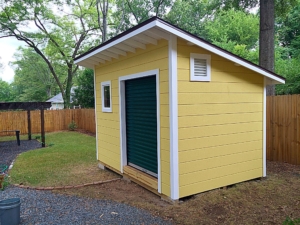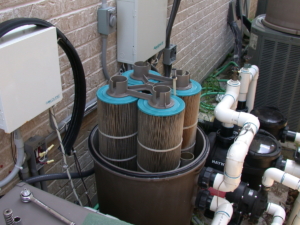Step-by-Step Guide: How to Install a Pool Cover Like a Pro
Having a pool is a luxury, but maintaining it can sometimes be challenging. One essential aspect of pool maintenance is installing a pool cover. A pool cover helps keep your pool clean and free from debris, conserves energy, and reduces water evaporation. This step-by-step guide will walk you through installing a pool cover like a pro, ensuring a secure fit and optimal performance.
Pre-Installation Preparation
Before diving into the installation process, there are a few essential steps to ensure a smooth and successful installation.
Assessing the Pool Size and Shape
Begin by carefully measuring your pool’s dimensions. Take note of any irregularities or unique features, such as steps or curves, which may affect the installation process. These measurements will help you determine the correct pool cover size needed.
Selecting the Right Type of Pool Cover
Various types of pool covers are available, including solid, mesh, and automatic. Each type has its benefits and considerations. Consider factors such as climate, intended use, and budget when selecting the appropriate cover for your pool.
Gathering the Necessary Tools and Materials
Before starting the installation, gather all the necessary tools and materials. This may include a measuring tape, drill, screws or anchors, straps, and a pool cover specific to your pool size. Having everything on hand will streamline the installation process.
Step 1: Cleaning the Pool
Ensuring that your pool is clean before installing the cover is crucial to prevent debris from getting trapped and causing damage.
Removing Debris and Leaves from the Pool
Using a skimmer net or leaf rake, remove any visible debris, leaves, or insects from the pool’s surface. This step will prevent these items from getting stuck underneath the cover and causing potential issues later.
Skimming and Vacuuming the Pool Thoroughly
After removing the larger debris, use a pool skimmer to skim the water’s surface and remove smaller particles. Also, vacuum the pool floor and walls to eliminate dirt or sediment. A clean pool will help maintain water clarity and prevent any buildup on the pool cover.
Step 2: Measuring and Marking
Accurate measurements and markings are essential for a proper pool cover installation. This step ensures a precise fit and alignment of the cover.
Measuring the Dimensions of the Pool Accurately
Using a measuring tape, measure the length and width of your pool. If your pool has unique features like steps or curves, measure those areas separately. Take note of these measurements for reference during the installation process.
Marking the Positions for Anchors or Straps
Next, mark the positions where the anchors or straps will be installed. These markings will serve as a guide when securing the cover later. Ensure that the marks are evenly spaced and aligned with the pool’s edges.
Step 3: Installing Anchors or Straps
The installation of anchors or straps will provide the necessary support for the pool cover. Choose the appropriate system based on your pool type and personal preference.
Explaining the Different Types of Anchor Systems
Various types of anchor systems are available, such as concrete anchors, brass anchors, or strap and buckle systems. Each system has its installation requirements and benefits. Consider factors like durability, ease of use, and maintenance when selecting the right system for your pool
Step-by-Step Guide to Installing Anchors or Straps
Following the manufacturer’s instructions, begin installing the anchors or straps at the marked positions. Use a drill or the recommended tools to secure the anchors firmly into the pool deck or surrounding surface. If using straps, ensure they are tightly fastened and properly tensioned for a secure fit.
Ensuring Proper Alignment and Stability
As you install the anchors or straps, periodically check for proper alignment and stability. Ensure that the anchors are at an equal height and that the straps are parallel to the pool’s edges. This will ensure a balanced and secure installation.
Step 4: Unrolling and Positioning the Cover
With the anchors or straps in place, it’s time to unroll and position the pool cover over the pool surface.
Unfolding the Pool Cover Carefully
Begin by unrolling the pool cover on a clean surface near the pool. Ensure that no sharp objects or debris could damage the cover. Carefully unfold the cover, taking care not to drag or snag it on any rough surfaces.
Positioning the Cover Over the Pool
Gently position the cover over the pool, starting from one end and gradually moving to the other. Ensure that the cover is centered and evenly aligned with the pool’s edges. It should overhang the pool’s sides by a few inches to provide adequate coverage.
Ensuring Equal Distribution of the Cover on All Sides
As you position the cover, periodically step back and check for equal distribution on all sides. Adjust as needed to ensure the cover is symmetrical and evenly stretched across the pool’s surface.
Step 5: Securing the Cover
Properly securing the pool cover is crucial to prevent wind damage and maintain its integrity. The method of securing will depend on the type of cover and anchor system you’ve chosen.
Attaching the Cover to the Anchors or Straps
Follow the manufacturer’s instructions to attach the cover securely to the anchors or straps. This may involve inserting the cover into the anchors or fastening the cover to the straps using buckles or clips. Ensure a tight and secure fit to prevent the cover from shifting or coming loose.
Ensuring a Tight and Secure Fit
Once the cover is attached, carefully inspect the edges and corners to ensure a tight fit. Tug gently on the cover to check for any signs of looseness or slack. Make any necessary adjustments to achieve a taut and secure installation.
Checking for Any Loose Areas and Adjusting as Needed
After securing the cover, inspect the entire surface for any loose areas or wrinkles. Smooth out any wrinkles and tighten any loose sections. Pay close attention to corners and areas near steps or curves, as these tend to be more susceptible to looseness.
Step 6: Testing and Inspecting
After installation, it’s important to test the cover’s functionality and inspect for any areas of concern.
Verifying the Cover’s Functionality
Once the cover is securely installed, test its functionality by gently pushing or tapping on the cover. It should feel firm and resist movement. This indicates that the cover is properly tensioned and secured.
Inspecting for Any Gaps or Areas of Concern
Thoroughly inspect the entire cover surface for any gaps, tears, or areas of concern. Pay close attention to the edges, corners, and areas around the anchors or straps. If any issues are found, address them promptly to prevent further damage or compromise to the cover.
Making Necessary Adjustments for a Proper Fit
During the inspection, if you notice any areas that require adjustment, such as loose straps or misaligned anchors, make the necessary adjustments to ensure a proper fit. This step is crucial for the long-term functionality and durability of the pool cover.
Pool Cover Maintenance and Care Tips
Proper maintenance and care of the pool cover will extend its lifespan and ensure its continued performance.
Regular Cleaning and Maintenance of the Pool Cover
Regularly clean the pool cover by removing any debris, leaves, or standing water. Use a pool cover cleaner or mild detergent with a soft brush to gently scrub the surface. Rinse thoroughly and allow the cover to dry before folding or storing.
Proper Storage During the Off-Season
When the pool cover is not in use, store it properly to prevent damage and prolong its lifespan. Clean and dry the cover thoroughly before folding it. Store it in a dry, cool area away from direct sunlight and potential sources of damage.
Additional Tips for Prolonging the Cover’s Lifespan
– Avoid dragging or pulling the cover excessively, as this can cause tears or damage.
– Trim any overhanging tree branches that could potentially fall onto the cover.
– Regularly inspect and tighten any loose straps or anchors.
– Consider using a pool cover pump to remove excess water from the cover’s surface during heavy rainfall or snowfall.
Summary: How to Install A Pool Cover
This step-by-step guide helps you install a pool cover like a pro. Proper installation ensures a secure fit and optimal performance and extends the lifespan of the cover. Take the time to prepare, measure, and secure the cover correctly for a clean, energy-efficient, and well-maintained pool all year round. With a little effort and attention to detail, you’ll enjoy the benefits of a professionally installed pool cover for years.







